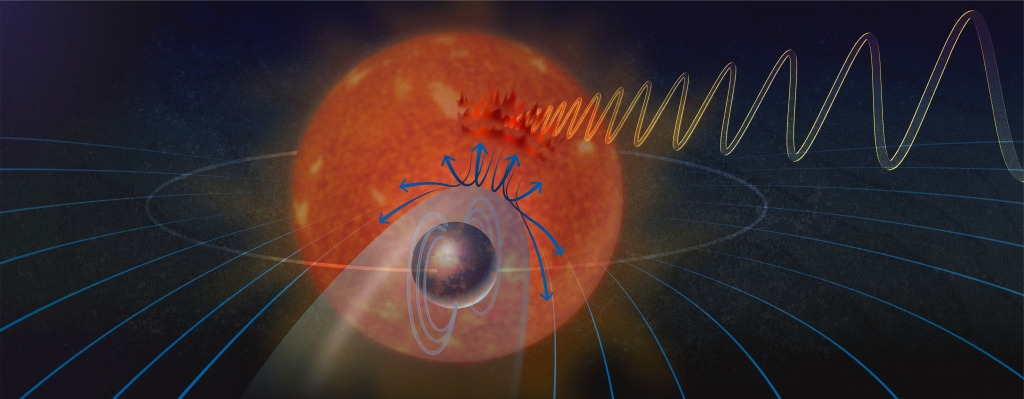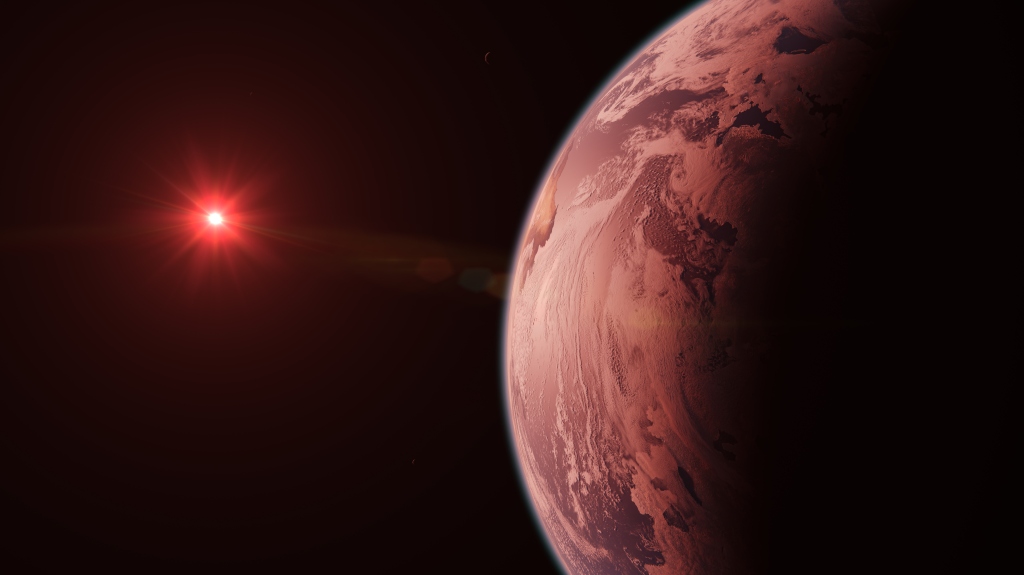‘Coherent’ radio signal from alien planet hints possibility of life outside of Earth
Astronomers are one step closer to learning whether there is life beyond Earth, following the discovery of an exoplanet that’s able to emit a “coherent” radio signal.
A magnetic field on a planet is the first sign it’s capable of being habitable as it prevents radiation.
On Earth, our magnetic field extends from the molten iron in the planet’s core out into space and protects life from cosmic radiation and charged particles released from the Sun.
Jupiter, Saturn, Uranus, and Neptune also have magnetic fields, however, they’re all much stronger than Earth’s.
Now, researchers believe they’ve uncovered an alien planet that could have its own magnetic field, indicating it could be supporting extraterrestrial beings.
In a paper published to Nature Astronomy journal, astrophysicists found rocky planet YZ Ceti was deflecting repeated radio signals from the star it orbits around.
Researchers Sebastian Pineda and Jackie Villadsen discovered the signals with the help of a radio telescope.

“We saw the initial burst and it looked beautiful,” Pineda said in a statement.
“When we saw it again, it was very indicative that, okay, maybe we really have something here.”
After further investigation, the pair came up with the theory that the planet, which is about 12 light years away, had an Earth-like field that was interacting with its star to generate the signal.
However, due to its invisibility, it has proven challenging to determine whether the distant planet actually has its own magnetic field.
“What we’re doing is looking for a way to see them,” Professor Villadsen said.
“If the planet has a magnetic field and it plows through enough star stuff, it will cause the star to emit bright radio waves.”
Joe Pesce, program director for the National Radio Astronomy Observatory said the discovery would play a crucial role in determining how magnetic fields work on other planets.
“The search for potentially habitable or life-bearing worlds in other solar systems depends in part on being able to determine if rocky, Earth-like exoplanets actually have magnetic fields,” he said in a statement.

“This research shows not only that this particular rocky exoplanet likely has a magnetic field but provides a promising method to find more.”
Both researchers agree there is still a lot of “follow-up work” to go before they can confirm whether there’s a magnetic field on the planet.
“There are a lot of new radio facilities coming online and planned for the future,” Pineda said. “Once we show that this is really happening, we’ll be able to do it more systematically. We’re at the beginning of it.”
Read the full article Here


